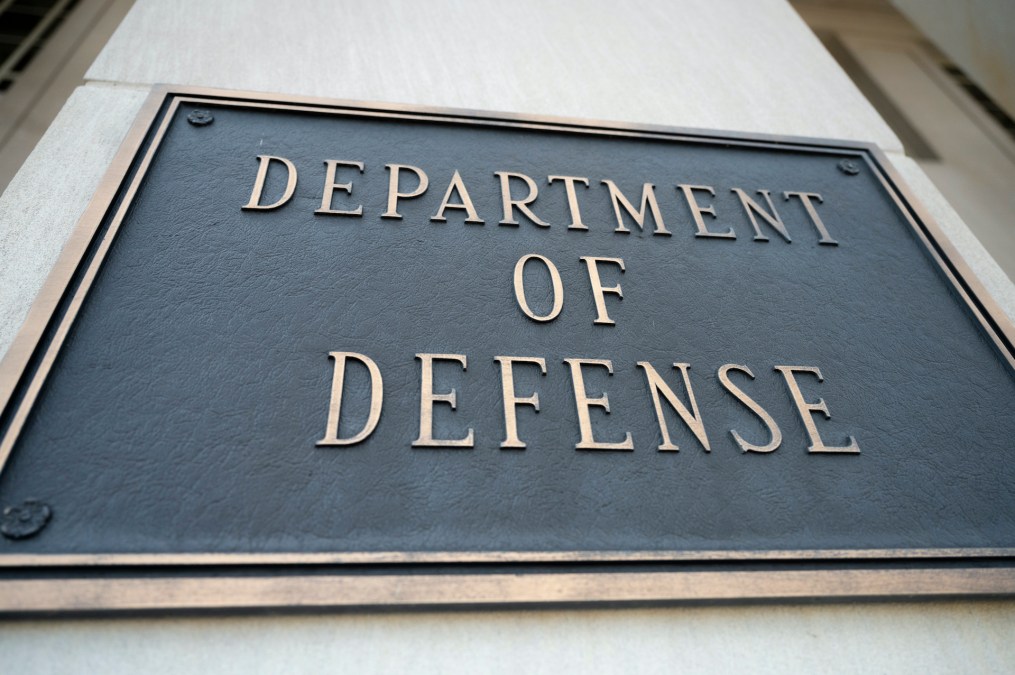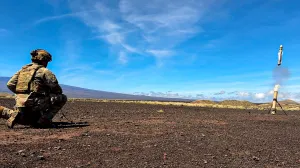Military services face sustainment burdens from Replicator systems

The Department of Defense is moving forward with the first tranche of systems for its Replicator initiative, but the military services that receive them must be prepared to sustain the platforms and work through other issues, officials noted during a congressional hearing Wednesday.
A stated goal of Replicator, a signature project of Deputy Defense Secretary Kathleen Hicks, is to accelerate production and field thousands of “attritable autonomous” systems across multiple domains by August 2025 to help the U.S. armed forces counter China’s military buildup. The Defense Innovation Unit, which falls under the Office of the Secretary of Defense (OSD), is supporting the effort.
Last week, the department announced that it had secured about $500 million for this fiscal year to move forward with tranche one, and it’s requesting an additional $500 million for fiscal 2025.
As DefenseScoop has previously reported, the first tranche includes kamikaze drones, unmanned surface vessels and counter-drone systems. Pentagon officials are already looking ahead at the second tranche, which is intended to help the services field additional platforms and supporting technologies such as command and control, autonomy and other software that are intended to boost the overall effectiveness and collaboration of these systems.
“One of the things that that has been underscored in this committee is that OSD-led efforts have a clear path to be fielded at scale, which is really the responsibility of the military services. Drones or other innovative capabilities just can’t be bought — they [also] need to be incorporated into the tactics and the procedures for how the military services prepare and fight … as well as being maintained and modernized,” Sen. Lisa Murkowski, R-Alaska, said during a Senate Appropriations Subcommittee on Defense hearing on Thursday.
She asked DOD acquisition leaders who were testifying whether there is sufficient rigor to ensure that efforts like Replicator and other OSD-spearheaded efforts have robust transition plans that include how the services are going to employ, field and maintain systems at scale.
“By asking the question, senator, you’re actually making a really, really important point. The services lead on fielding at scale and organize, train and equip. Not OSD — not OSD. And so what’s really, really important is much beyond the technology and the widget, is what we call DOTMILPF — the doctrine, the training, the operations. Otherwise, it just doesn’t really matter,” Undersecretary of Defense for Acquisition and Sustainment William LaPlante replied.
To be successful, the services need to be ready to sustain capabilities that are cranked out in large numbers, he noted.
Doug Bush, the Army’s acquisition chief, has applauded the Replicator initiative for putting the service in a better position to accelerate its new LASSO program with the production of more Switchblade 600 drones, which are manufactured by AeroVironment.
During Wednesday’s hearing, he noted that Replicator is tightly coupled with an official Army program, which gives it a clear path for scaling.
Nickolas Guertin, the acquisition chief for the Department of the Navy, said the sea services are supportive of Replicator, but it’s not just a matter of scaling production.
“We actually brought two Navy and one Marine Corps projects to the first tranche of Replicator in partnership with OSD, and … that partnership is critical to fielding at scale,” he told lawmakers. “One other aspect to that is when we’re looking at these kinds of initiatives, we want to make sure we carry forward the sustainability and support work to make sure that our soldiers, sailors, airmen, Marines, guardians can actually use this stuff in a reliable way when they need to in a fight.”
The Navy is pursuing multiple types of unmanned surface vessels via Replicator, including through a partnership with the Defense Innovation Unit via DIU’s Production-Ready, Inexpensive, Maritime Expeditionary (PRIME) commercial solutions opening. Contracts are expected to be awarded this summer.
Additionally, Anduril’s Wide-Area Infrared System for Persistent Surveillance (WISP) counter-drone technology was tapped for ramped-up production in association with efforts put forth by the Marine Corps’ Ground Based Air Defense program.
The 2024 Further Consolidated Appropriations Act, which Congress passed in March, included a provision that requires the Pentagon to brief Congress on the concept of operations, updated spending profiles and requirements for sustaining each system — through fiscal 2029 — that’s been selected to receive Replicator funding.
In a call earlier this month, DOD officials acknowledged that the Pentagon has a lot more work to do now that funding has been secured for moving ahead with the first tranche.
“That includes continuing to refine the concept of operation and employment for these capabilities; accelerating the experimentation timelines for individual capabilities, but also the collective portfolio to make sure that we are adequately testing and experimenting the mass effects that that we hope to achieve,” a senior defense official said during the background call with reporters.






